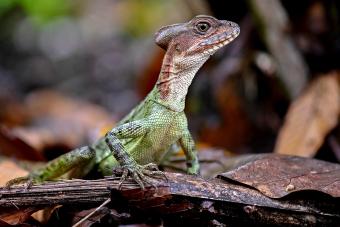
Scorpions are arachnids that can withstand incredibly extreme environments and thrive. They are extremely adaptive animals that have been around since before the dinosaurs and will likely continue to thrive as a species. Learn more scorpion facts to help you understand this hearty critter.
Scorpion Facts for Kids
Fun scorpion facts for kids:
- Scorpions have been around for hundreds of millions of years with the only major difference of modern scorpions being their smaller size.
- Their stinger is called a telson with a vesicle at the very tip of it, which is where their venom is stored.
- The scorpion has authority over how much venom is released when it chooses to sting.
- Scorpions can have up to 100 babies at a time, and they are born live.
- Baby scorpions will ride on their mother's back for protection until their exoskeleton hardens enough to protect them.
- Scorpions can live for up to six years, although some live much longer.
- Scorpions reach full maturity around three years old.
- Scorpions can range in size depending on age and species, with most falling between about half an inch and nine inches long.

Scorpion Diet
Scorpions eat:
- Spiders
- Crickets
- Cockroaches
- Mice
- Lizards
- Worms
Interesting Facts About Scorpion Life Cycle
The scorpion life cycle:
- The first stage is the egg stage, which is housed inside of their mother versus laid.
- Next comes the nymph stage, which lasts between one and three years, during which time the scorpion molts up to six time.
- Adulthood occurs around age three when scorpions are ready to reproduce.
Scorpion Body Parts
Scorpions have eight legs, two pedipalps, and a telson with a vesicle. Their body is covered in an exoskeleton which protects them from water loss, assists with their breathing, and provides muscular support. Thier body is divided into three parts:
- The prosoma- their head and claws
- The mesosoma- their abdomen and eight legs
- The metasoma- their tail and stinger

Scorpion Venom
Scorpion venom is housed in the vesicle at the tip of their tail. Each scorpion species will have a different venom potency, and even small or young scorpions can be extremely deadly. Their venom is made up of neurotoxins, which can lead to paralysis and death. The death-stalker scorpion is one of the most dangerous species of scorpion with extremely potent venom.
Scorpion Adaptations
Scorpion adaptations:
- While their venom typically kills only small prey, there are about 40 species that can kill a human.
- Scorpions can withstand incredibly harsh climates- from freezing temperatures to scorching desert heat.
- Scorpions can freeze and thaw out without passing away.
- Scorpions can slow down their metabolism if need be and can survive off of one small meal a year.
Blue Scorpion Facts
Also known as the brown bark scorpion or Florida bark scorpion, this species can be found all over the world and are sometimes kept as pets. Blue scorpion venom is being examined for having anti-inflammatory properties and is being studied for its ability to slow down tumor growth in humans.

Golden Scorpion Facts
The gold scorpion:
- Can be found in the Middle East and Africa
- The death-stalker scorpion is a type of gold scorpion and is one of the most deadly
- They tend to live in desert habitats and burrow for shelter
- Tend to be around 3.5 inches in length, but size will vary depending on specific species
Interesting Facts About Scorpions
Scorpions have adapted to survive intense and harsh environments with ease. These interesting arachnids will certainly be around for a long time.







